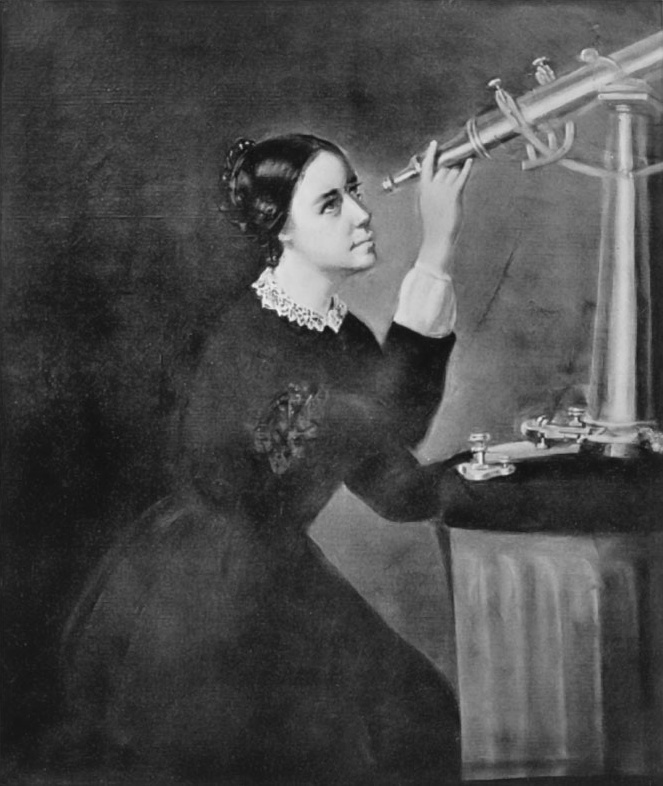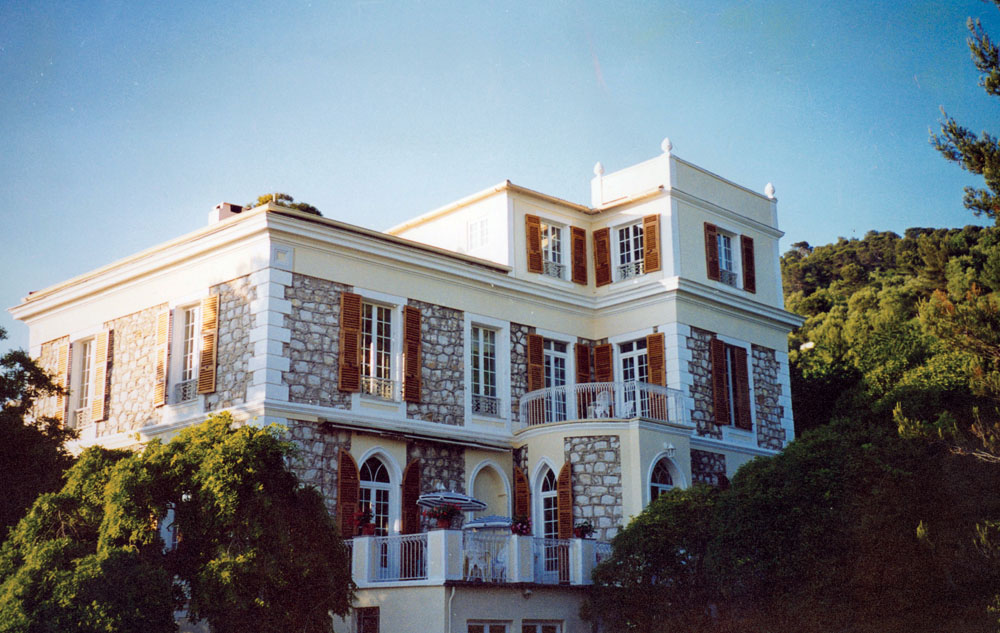|
Teresa Lago
Maria Teresa Vaz Torrão Lago (born 1947) is a Portuguese astronomer who founded the Centre for Astrophysics of the University of Porto and created the first astronomy degree program in Portugal. Lago is currently the General Secretary of the International Astronomical Union. Her research focuses on the evolution of young stars and she is active in the promotion of astronomy and scientific culture to the public. Career Maria Teresa Vaz Torrão Lago graduated from the University of Porto and received a Ph.D in Astronomy from the University of Sussex in 1979. Her dissertation, ''Observational and Theoretical Study of T Tauri Stars'' was written under advisor Leon Mestel. She led the creation of the first astronomy degree in Portugal at the University of Porto in 1983, where she remains a professor. In 1988, she founded the Centre for Astrophysics at the University of Porto and served as its director for 18 years. She helped promote the signing of the 1990 cooperation agreeme ... [...More Info...] [...Related Items...] OR: [Wikipedia] [Google] [Baidu] |
Lisboa
Lisbon (; pt, Lisboa ) is the capital and largest city of Portugal, with an estimated population of 544,851 within its administrative limits in an area of 100.05 km2. Lisbon's urban area extends beyond the city's administrative limits with a population of around 2.7 million people, being the 11th-most populous urban area in the European Union.Demographia: World Urban Areas - demographia.com, 06.2021 About 3 million people live in the , making it the third largest metropolitan area in the , aft ... [...More Info...] [...Related Items...] OR: [Wikipedia] [Google] [Baidu] |
European Research Council
The European Research Council (ERC) is a public body for funding of scientific and technological research conducted within the European Union (EU). Established by the European Commission in 2007, the ERC is composed of an independent Scientific Council, its governing body consisting of distinguished researchers, and an Executive Agency, in charge of the implementation. It forms part of the framework programme of the union dedicated to research and innovation, Horizon 2020, preceded by the Seventh Research Framework Programme (FP7). The ERC budget is over €13 billion from 2014 – 2020 and comes from the Horizon 2020 programme, a part of the European Union's budget. Under Horizon 2020 it is estimated that around 7,000 ERC grantees will be funded and 42,000 team members supported, including 11,000 doctoral students and almost 16,000 post-doctoral researchers. Researchers from any field can compete for the grants that support pioneering projects. The ERC competitions are open ... [...More Info...] [...Related Items...] OR: [Wikipedia] [Google] [Baidu] |
University Of Porto Alumni
A university () is an institution of higher (or tertiary) education and research which awards academic degrees in several academic disciplines. ''University'' is derived from the Latin phrase ''universitas magistrorum et scholarium'', which roughly means "community of teachers and scholars". Universities typically offer both undergraduate and postgraduate programs. The first universities in Europe were established by Catholic Church monks. The University of Bologna (), Italy, which was founded in 1088, is the first university in the sense of: *being a high degree-awarding institute. *using the word ''universitas'' (which was coined at its foundation). *having independence from the ecclesiastic schools and issuing secular as well as non-secular degrees (with teaching conducted by both clergy and non-clergy): grammar, rhetoric, logic, theology, canon law, notarial law.Hunt Janin: "The university in medieval life, 1179–1499", McFarland, 2008, , p. 55f.de Ridder-Symoens, Hilde''A ... [...More Info...] [...Related Items...] OR: [Wikipedia] [Google] [Baidu] |
Portuguese Astronomers
Portuguese may refer to: * anything of, from, or related to the country and nation of Portugal ** Portuguese cuisine, traditional foods ** Portuguese language, a Romance language *** Portuguese dialects, variants of the Portuguese language ** Portuguese man o' war, a dangerous marine cnidarian that resembles an 18th-century armed sailing ship ** Portuguese people, an ethnic group See also * * ''Sonnets from the Portuguese ''Sonnets from the Portuguese'', written ca. 1845–1846 and published first in 1850, is a collection of 44 love sonnets written by Elizabeth Barrett Browning. The collection was acclaimed and popular during the poet's lifetime and it remain ...'' * " A Portuguesa", the national anthem of Portugal * Lusofonia * Lusitania * {{disambiguation Language and nationality disambiguation pages ... [...More Info...] [...Related Items...] OR: [Wikipedia] [Google] [Baidu] |
Women Astrophysicists
A woman is an adult female human. Prior to adulthood, a female human is referred to as a girl (a female child or adolescent). The plural ''women'' is sometimes used in certain phrases such as " women's rights" to denote female humans regardless of age. Typically, women inherit a pair of X chromosomes, one from each parent, and are capable of pregnancy and giving birth from puberty until menopause. More generally, sex differentiation of the female fetus is governed by the lack of a present, or functioning, SRY-gene on either one of the respective sex chromosomes. Female anatomy is distinguished from male anatomy by the female reproductive system, which includes the ovaries, fallopian tubes, uterus, vagina, and vulva. A fully developed woman generally has a wider pelvis, broader hips, and larger breasts than an adult man. Women have significantly less facial and other body hair, have a higher body fat composition, and are on average shorter and less muscular th ... [...More Info...] [...Related Items...] OR: [Wikipedia] [Google] [Baidu] |
Women Astronomers
The following is a list of astronomers, astrophysicists and other notable women who have made contributions to the field of astronomy. __NOTOC__ A * Madge Adam (1912–2001), English solar astronomer * Maggie Aderin-Pocock (born 1968), English space scientist * Conny Aerts (born 1966), Belgian astrophysicist specializing in asteroseismology * Aglaonike (c. 1st or 2nd Century BCE), ancient Greek astronomer and thaumaturge * María Luisa Aguilar Hurtado (1938–2015), Peruvian astronomer * Eva Ahnert-Rohlfs (1912–1954), German variable star astronomer * Elizabeth Alexander (1908–1958), English geologist and physicist * Leah Allen (1884–1973), American astronomer and educator * Adelaide Ames (1900 - 1932), American astronomer * Anja Cetti Andersen (born 1965), Danish astronomer focused on cosmic dust * Necia H. Apfel (born 1930), American astronomer and educator * Alice Archenhold (1874–1943), German astronomer * Anne Archibald, Canadian astronomer and educator B ... [...More Info...] [...Related Items...] OR: [Wikipedia] [Google] [Baidu] |
Living People
Related categories * :Year of birth missing (living people) / :Year of birth unknown * :Date of birth missing (living people) / :Date of birth unknown * :Place of birth missing (living people) / :Place of birth unknown * :Year of death missing / :Year of death unknown * :Date of death missing / :Date of death unknown * :Place of death missing / :Place of death unknown * :Missing middle or first names See also * :Dead people * :Template:L, which generates this category or death years, and birth year and sort keys. : {{DEFAULTSORT:Living people 21st-century people People by status ... [...More Info...] [...Related Items...] OR: [Wikipedia] [Google] [Baidu] |
American Astronomical Society
The American Astronomical Society (AAS, sometimes spoken as "double-A-S") is an American society of professional astronomers and other interested individuals, headquartered in Washington, DC. The primary objective of the AAS is to promote the advancement of astronomy and closely related branches of science, while the secondary purpose includes enhancing astronomy education and providing a political voice for its members through lobbying and grassroots activities. Its current mission is to enhance and share humanity's scientific understanding of the universe as a diverse and inclusive astronomical community. History The society was founded in 1899 through the efforts of George Ellery Hale. The constitution of the group was written by Hale, George Comstock, Edward Morley, Simon Newcomb and Edward Charles Pickering. These men, plus four others, were the first Executive Council of the society; Newcomb was the first president. The initial membership was 114. The AAS name of the so ... [...More Info...] [...Related Items...] OR: [Wikipedia] [Google] [Baidu] |
Henri Chrétien
Henri Jacques Chrétien (1 February 1879, Paris – 6 February 1956, Washington, D.C.) was a French astronomer and an inventor. Born in Paris, France, his most famous inventions are: - the anamorphic widescreen process, using an anamorphic lens system called Hypergonar, that resulted in the CinemaScope widescreen technique, and - the co-invention, with George Willis Ritchey, of the Ritchey–Chrétien telescope, an improved type of astronomical telescope, employing a system now used in virtually all large research telescopes. He spent part of his early astronomical career at the Nice Observatory, which was close to his house, the Villa Paradou. The Villa was built by famous French architect Charles Garnier who also built the Opera of Paris. In 1995, the abandoned villa was acquired by the artist Rainer Maria Latzke, who restored it and added new murals to the existing frescoes. Chrétien was one of the founders of the ''Institut d'optique théorique et appliquée'' and pr ... [...More Info...] [...Related Items...] OR: [Wikipedia] [Google] [Baidu] |
Academia Europaea
The Academia Europaea is a pan-European Academy of Humanities, Letters, Law, and Sciences. The Academia was founded in 1988 as a functioning Europe-wide Academy that encompasses all fields of scholarly inquiry. It acts as co-ordinator of European interests in national research agencies. History The concept of a 'European Academy of Sciences' was raised at a meeting in Paris of the European Ministers of Science in 1985. The initiative was taken by the Royal Society (United Kingdom) which resulted in a meeting in London in June 1986 of Arnold Burgen (United Kingdom), Hubert Curien (France), Umberto Colombo (Italy), David Magnusson (Sweden), Eugen Seibold (Germany) and Ruurd van Lieshout (the Netherlands) – who agreed to the need for a new body. The two key purposes of Academia Europaea are: * express ideas and opinions of individual scientists from Europe * act as co-ordinator of European interests in national research agencies It does not aim to replace existing national a ... [...More Info...] [...Related Items...] OR: [Wikipedia] [Google] [Baidu] |
Royal Astronomical Society
(Whatever shines should be observed) , predecessor = , successor = , formation = , founder = , extinction = , merger = , merged = , type = NGO, learned society , status = Registered charity , purpose = To promote the sciences of astronomy & geophysics , professional_title = Fellow of the Royal Astronomical Society (FRAS) , headquarters = Burlington House , location = Piccadilly, London , coords = , region_served = , services = , membership = , language = , general = , leader_title = Patron , leader_name = King Charles III , leader_title2 = President , leader_name2 = Mike Edmunds , leader_title3 = Executive Director , leader_name3 = Philip Diamond , leader_title4 = , leader_name4 = , key_peop ... [...More Info...] [...Related Items...] OR: [Wikipedia] [Google] [Baidu] |


.jpg)


